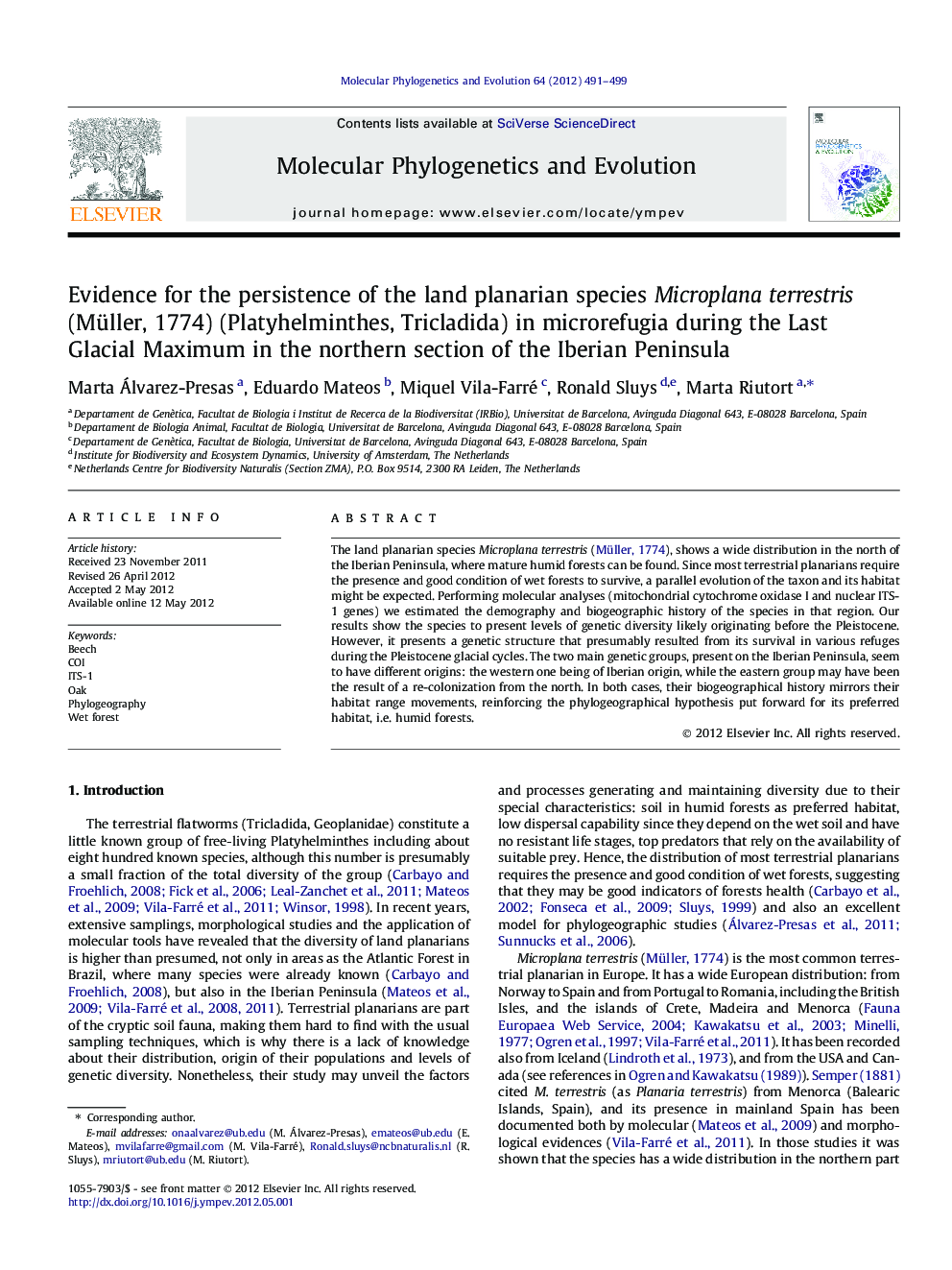| Article ID | Journal | Published Year | Pages | File Type |
|---|---|---|---|---|
| 2834099 | Molecular Phylogenetics and Evolution | 2012 | 9 Pages |
The land planarian species Microplana terrestris ( Müller, 1774), shows a wide distribution in the north of the Iberian Peninsula, where mature humid forests can be found. Since most terrestrial planarians require the presence and good condition of wet forests to survive, a parallel evolution of the taxon and its habitat might be expected. Performing molecular analyses (mitochondrial cytochrome oxidase I and nuclear ITS-1 genes) we estimated the demography and biogeographic history of the species in that region. Our results show the species to present levels of genetic diversity likely originating before the Pleistocene. However, it presents a genetic structure that presumably resulted from its survival in various refuges during the Pleistocene glacial cycles. The two main genetic groups, present on the Iberian Peninsula, seem to have different origins: the western one being of Iberian origin, while the eastern group may have been the result of a re-colonization from the north. In both cases, their biogeographical history mirrors their habitat range movements, reinforcing the phylogeographical hypothesis put forward for its preferred habitat, i.e. humid forests.
Graphical abstractFigure optionsDownload full-size imageDownload as PowerPoint slideHighlights► Terrestrial planarians require humid soils in forests to survive and are bad dispersers. ► We perform demographic and phylogenetic studies on Microplana terrestris in the Iberian Peninsula. ► Microplana terrestris is genetically structured in a eastern and a western clades. ► The western clade is also highly structured. ► Microplana terrestris Pleistocene demographic history mirrors the biogeographic history of wet forest refuges.
